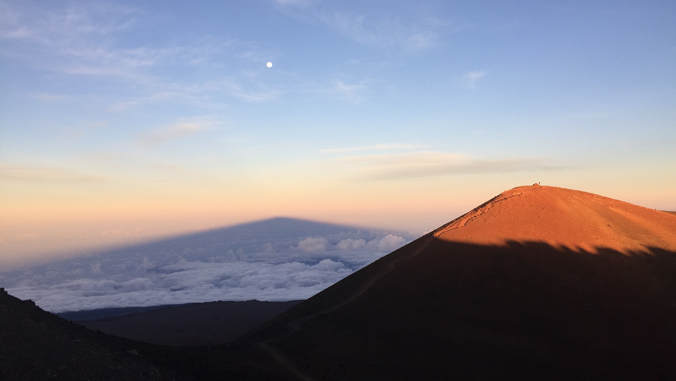
The University of Hawaiʻi Board of Regents (BOR) will consider adopting the draft Master Plan for UH-managed lands on Maunakea at the BOR January 20, 2022 meeting (PDF). The draft Master Plan for the University of Hawaiʻi Maunakea Lands: E Ō I Nā Leo (Listen to the Voices) requires board approval to take effect and would replace the Master Plan the BOR adopted in 2000. The draft can be found in the materials section of the BOR agenda (PDF).
The draft Master Plan serves as a framework for aligning land-use decisions in a manner that is consistent with UH’s mission and purpose and has been publicly posted since December 10, 2021. Written testimony can be submitted by emailing bor.testimony@hawaii.edu or via an online form. Those wishing to provide oral testimony may register through a link on the meeting agenda (PDF). The meeting is scheduled to start at 8:30 a.m., is virtual, and will be livestreamed on the BOR meeting livestream page.
The draft Master Plan was developed over years of work by the University during which input and advice was sought from individuals, groups, and agencies, such as the Office of Hawaiian Affairs (OHA), the Department of Land and Natural Resources (DLNR), the Maunakea Management Board and Kahu Kū Mauna.
The university also received more than 1,450 comments (online, telephone messages, U.S. Postal Service) on the draft of the new plan during a more than month-long public comment period that ended in late-October. The plan submitted for the board’s consideration incorporates applicable comments received from the public and multiple stakeholder groups. A summary of outreach efforts can be found in Appendix A of the Master Plan Volume 1. All public comments received are compiled in Volume 2 of the Master Plan.
The overarching goals of the Master Plan are related to responsible stewardship, maintaining leadership in astronomy, diversifying educational pursuits, and seeking balance among those who come to Maunakea. Among the strategies outlined in the plan are efforts to broaden Native Hawaiian and community participation in planning and programming; measures to reduce impacts to the cultural landscape and natural resources, especially in the summit region, by limiting development; and the gradual repurposing of Halepōhaku as a Multidisciplinary Field Station to support diverse programs.
The Master Plan sets forth a framework for early decision making and community input to determine whether a particular land use should be allowed to proceed to permitting and environmental review by the Board of Land and Natural Resources and the DLNR, which regulate land uses in conservation districts.

